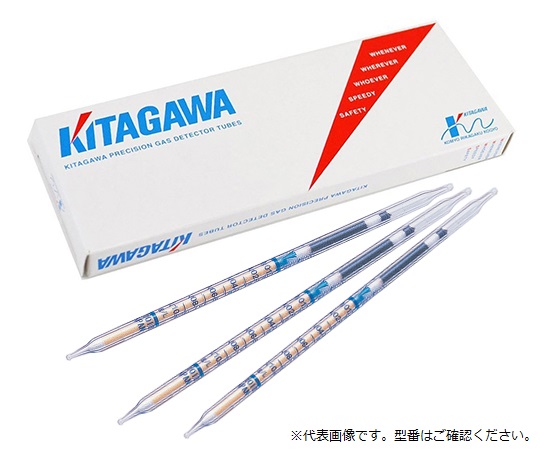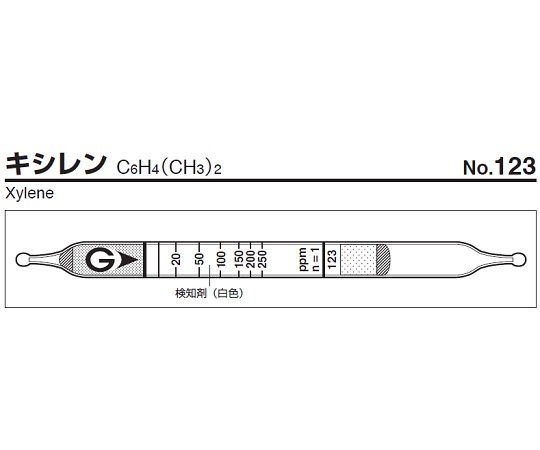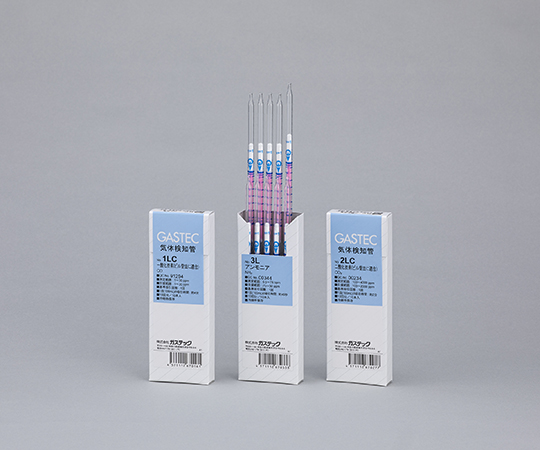
KITAGAWA, KOMYO RIKAGAKU KOGYO K. K. 126B Gas Detector Tube Carbon Dioxide (0.01 - 0.7%)
| Manufaturer: | KITAGAWA, KOMYO RIKAGAKU KOGYO K. K. |
| Model: | 126B |
*The above price is Standard Price, Kindly click on Request a quote ![]() to unlock the Best Price and Delivery Date - Check Availability. Our expert consulting team is always ready to assist you.
to unlock the Best Price and Delivery Date - Check Availability. Our expert consulting team is always ready to assist you.
*Order Process: 1. Request a quote ⇒ 2. Quote via Email ⇒ 3. Proforma Invoice ⇒ 4. Payment ⇒ 5. Delivery and Invoice.
*We deliver to your doorstep under DAP terms. Customs clearance is for your account.

*You can't find the product you need, please send us the picture/specifications/model/product code and quantity you need to email: [email protected]. We will find it for you.
*Review us here: Review Now
Description
- Detecting tube name: 126B Carbon dioxide
- Number of measurements of 1 box: 10
- Measurement gas name: Carbon dioxide (carbon gas)
- Measurement range: 0.01 - 0.7%
- Measurement gas name: Carbon dioxide
- Measurement range: 0.01 - 0.7%
- *Please be careful because calibration may be unable due to type of gas. *Measurement times vary from each used detecting tube. Please be careful.
-
Frequently Asked Questions about the KITAGAWA 126B CO₂ Detector Tube:
1. What is the KITAGAWA 126B CO₂ Detector Tube?
The KITAGAWA 126B is a precision gas detector tube formulated to measure carbon dioxide in ambient air. It uses colorimetric reagents that change from purplish blue to pale pink proportional to CO₂ concentration, and is part of the KITAGAWA Gas Detector Tube System for quick and accurate gas analysis.
2. What measurement range does the 126B tube cover?
The nominal measurement range of the KITAGAWA 126B is 0.03 – 0.7 % CO₂ by volume. When using three pump strokes (300 mL), it can detect down to approximately 0.01 % CO₂ (100 ppm) and up to 0.7 % CO₂.
3. What is the minimum detectable limit?
With a single pump stroke (100 mL), the detectable limit is around 0.03 % CO₂. By increasing to three pump strokes (300 mL), the tube can reliably detect concentrations as low as 20 ppm CO₂.
4. Which aspirating pumps are compatible with the 126B tube?
You must use the 126B tube only with KITAGAWA piston‐type aspirating pumps: models AP-20, AP-20S, AP-1, or AP-1S. Using other pumps may introduce considerable measurement errors.
5. How do I perform a sampling run with the 126B tube?
-
Wear safety goggles and chemical‐resistant gloves.
-
Break both ends of the tube.
-
Insert the tube into the pump, aligning guide marks.
-
Pull the pump handle through its full stroke until it locks.
-
Wait 5 minutes or until the pump’s flow indicator confirms completion.
-
Remove the tube and proceed to read the result.
-
6. How is the CO₂ concentration read from the tube?
Place the inlet end’s discolored reagent edge at the “0–0” line of the concentration chart and the outlet end’s edge at the “L–L” line. Read the gas concentration at the terminus of the pink stain against the printed scale. For three‐stroke readings, use the separate 3-stroke scale provided.
7. What is the sample volume and required sampling time?
Each pump stroke draws approximately 100 mL of air and requires about 5 minutes to complete sampling and reagent reaction. Three strokes equal 300 mL over roughly 15 minutes.
8. How can I improve sensitivity for lower CO₂ levels?
To measure concentrations below 0.03 %, perform three consecutive pump strokes (300 mL total). Use the 3-stroke calibration scale to determine values between 0.01 % and 0.15 % CO₂.
9. What color change indicates CO₂ exposure?
The reagent inside turns from purplish blue to pale pink in direct proportion to the CO₂ concentration it encounters during sampling.
10. What are the operating temperature and environmental conditions?
Accurate measurements require ambient temperatures between 0 °C and 40 °C (32 °F to 104 °F). Do not use the tube outside this range to avoid errors or reagent degradation.
11. How should I store the tubes and what is their shelf life?
Store tubes in a cool, dark place at 0 °C – 25 °C. Keep them dry and out of direct sunlight. Each box of 10 tubes has a printed expiration date and a typical shelf life of two years from manufacture.
12. How many tubes are in a box and what is the product code?
Each box contains 10 detector tubes. The manufacturer’s part number is 126B. Ensure you order this exact code to receive genuine KITAGAWA 126B tubes.
13. What safety precautions should I follow?
-
Always wear eye protection and chemical‐resistant gloves.
-
Avoid direct skin contact with broken‐tube reagents.
-
Handle broken glass and spent tubes as hazardous chemical waste.
-
Work in a well‐ventilated area to prevent reagent vapor exposure.
-
14. How do I dispose of used or broken tubes?
Collect spent and broken tubes in a sealed, labeled container. Dispose of them according to local regulations for hazardous chemical and glass waste to protect personnel and the environment.
15. What are common errors and how can I troubleshoot them?
-
Pump leakage: inspect and replace worn seals or gaskets.
-
Incomplete color change: verify correct pump stroke count and ambient temperature.
-
Weak stain: ensure the tube is within its expiration date and has been stored properly.
-
Flow indicator failure: refer to the pump’s manual for cleaning or replacement procedures.
-
16. What are typical applications for the 126B tube?
The 126B is widely used in industrial hygiene, environmental monitoring, and indoor air‐quality assessments where rapid, on-site quantification of CO₂ is required.
17. What is the detection principle of the KITAGAWA system?
The KITAGAWA Gas Detector Tube System uses high-purity reagents in sealed glass tubes. The aspirating pump draws a fixed volume of air through the tube, and the target gas reacts to form a colored stain whose length is directly proportional to concentration.












